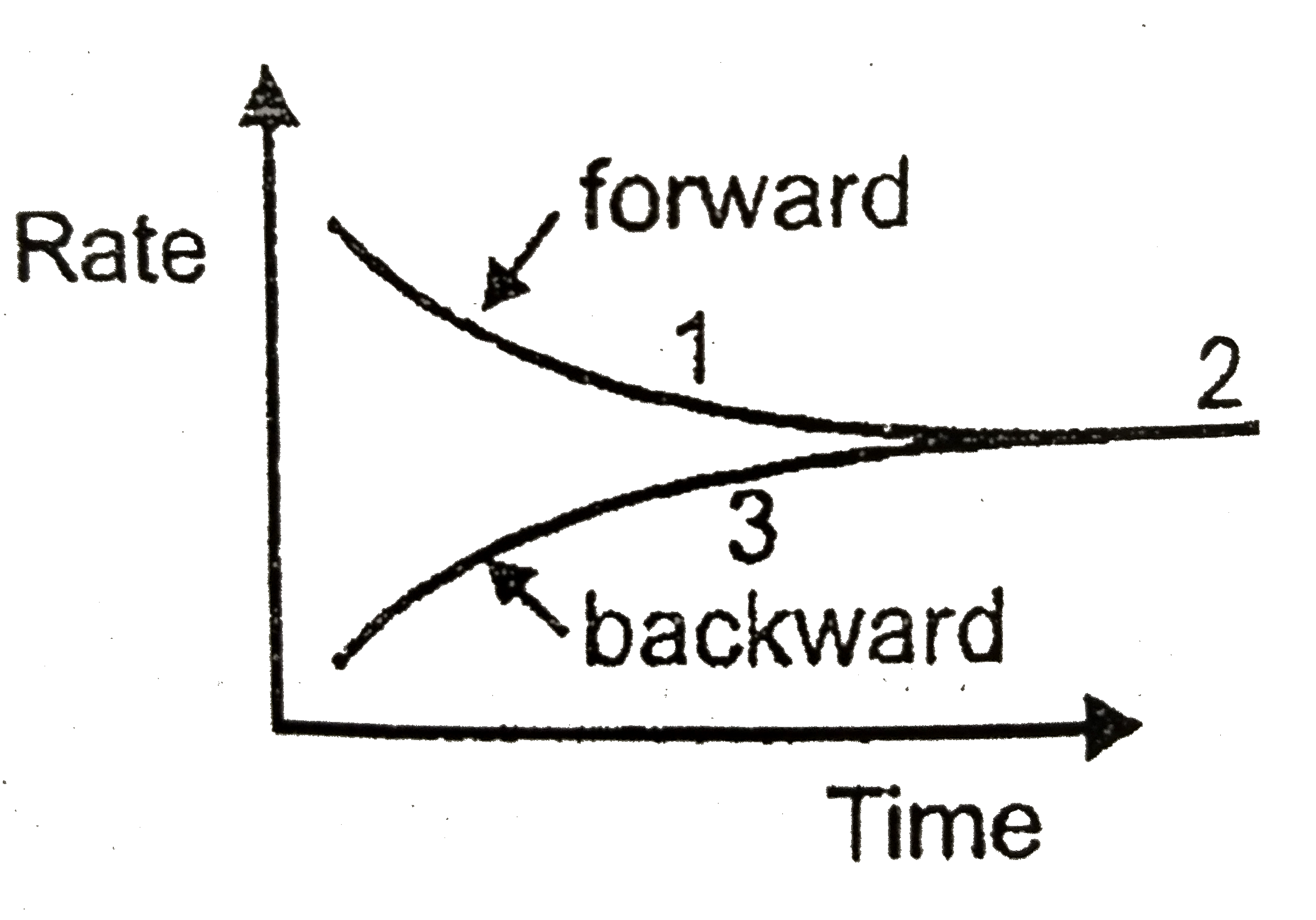For the reaction PCl5<⇒PCl3(g)+Cl2(g),ΔH is
ΔU+3RT
∆U+RT
ΔU+2RT
ΔU−2RT
To determine the enthalpy change (∆H) for the reaction PCl5⇌PCl3(g)+Cl2(g), we can use the relationship between enthalpy change (∆H) and internal energy change (∆U) along with the change in the number of moles of gas.
1. Identify the Reaction:
The reaction given is:
PCl5⇌PCl3(g)+Cl2(g)
2. Determine the Number of Moles:
- Reactants: There is 1 mole of PCl5.
- Products: There are 1 mole of PCl3 and 1 mole of Cl2.
- Therefore, the total number of moles of products = 1 + 1 = 2 moles.
- The total number of moles of reactants = 1 mole.
3. Calculate the Change in Moles of Gas (ΔNg):
ΔNg=(moles of products)−(moles of reactants)=2−1=1
4. Use the Relationship Between ∆H and ∆U:
The relationship is given by:
ΔH=ΔU+ΔNg⋅R⋅T
where R is the ideal gas constant and T is the temperature in Kelvin.
5. Substitute the Values:
Since ΔNg=1:
ΔH=ΔU+(1)⋅R⋅T
This simplifies to:
ΔH=ΔU+R⋅T
6. Conclusion:
The enthalpy change for the reaction can be expressed as:
ΔH=ΔU+RT
Hence, the correct answer is that ΔH is equal to ΔU+RT.
The reaction given is:
PCl5⇌PCl3(g)+Cl2(g)
- Reactants: There is 1 mole of PCl5.
- Products: There are 1 mole of PCl3 and 1 mole of Cl2.
- Therefore, the total number of moles of products = 1 + 1 = 2 moles.
- The total number of moles of reactants = 1 mole.
ΔNg=(moles of products)−(moles of reactants)=2−1=1
The relationship is given by:
ΔH=ΔU+ΔNg⋅R⋅T
where R is the ideal gas constant and T is the temperature in Kelvin.
Since ΔNg=1:
ΔH=ΔU+(1)⋅R⋅T
This simplifies to:
ΔH=ΔU+R⋅T
The enthalpy change for the reaction can be expressed as:
ΔH=ΔU+RT
Hence, the correct answer is that ΔH is equal to ΔU+RT.
Topper's Solved these Questions
Similar Questions
For the reaction, PCl3(g)+Cl2(g)⇔PCl5(g), the position of equilibrium can be shifted to the right by:
View SolutionAt equilibrium of the reaction PCl5(g)⇔PCl3(g)+Cl2(g)the concentrations of PCl5(g)and PCl3(g) are 0.2 and 0.1 moles/lit.respectively Kc is 0.05. The equilibrium concentration of Cl2
View Solution2.0 mole ofPCl5 were nttoducedd in a vessel of 5.0 L capacity of a particular temperature At equilibrium, PCl5 was found to be 35 % dissociated into PCl3andCl2 the value of Kc for the reaction
PCl3(g)+Cl2(g)⇔PCl5(g)
View SolutionIn the reaction PCl5(g)⇔PCl3(g)+Cl2(g)the equilibrium concentration of PCl5 and PCl3 are 0.4 and 0.2 mole/litre respectively. If the value of KC is 0.5 what is concentration of Cl2 in moles/litre ?
View SolutionIn the reaction
PCl5(g)⇔PCl3(g)+Cl2(g)
a graph in plotted to show the variation of rate of forward and backward
reactions against time. Which of the following is correct?

Q>K Q=K Q<K
View SolutionIn the reaction PCl3+Cl2→PCl5, which of the following is correct?
View SolutionFor the gas phase reaction
PCl5→PCl3(g)+Cl2(g)
which of the following conditions are correct?
View SolutionWrite balanced equation for reaction of PCl5 with heavy water . ]
View SolutionConsider the reactions
(i)PCl5(g)⇔PCl3(g)+Cl2(g)
(ii)N2O4(g)⇔2NO2(g)
The addition of an inert gas at constant volume
View SolutionExpress the rate of following reactions
PCl5→PCl3+Cl2
View Solution